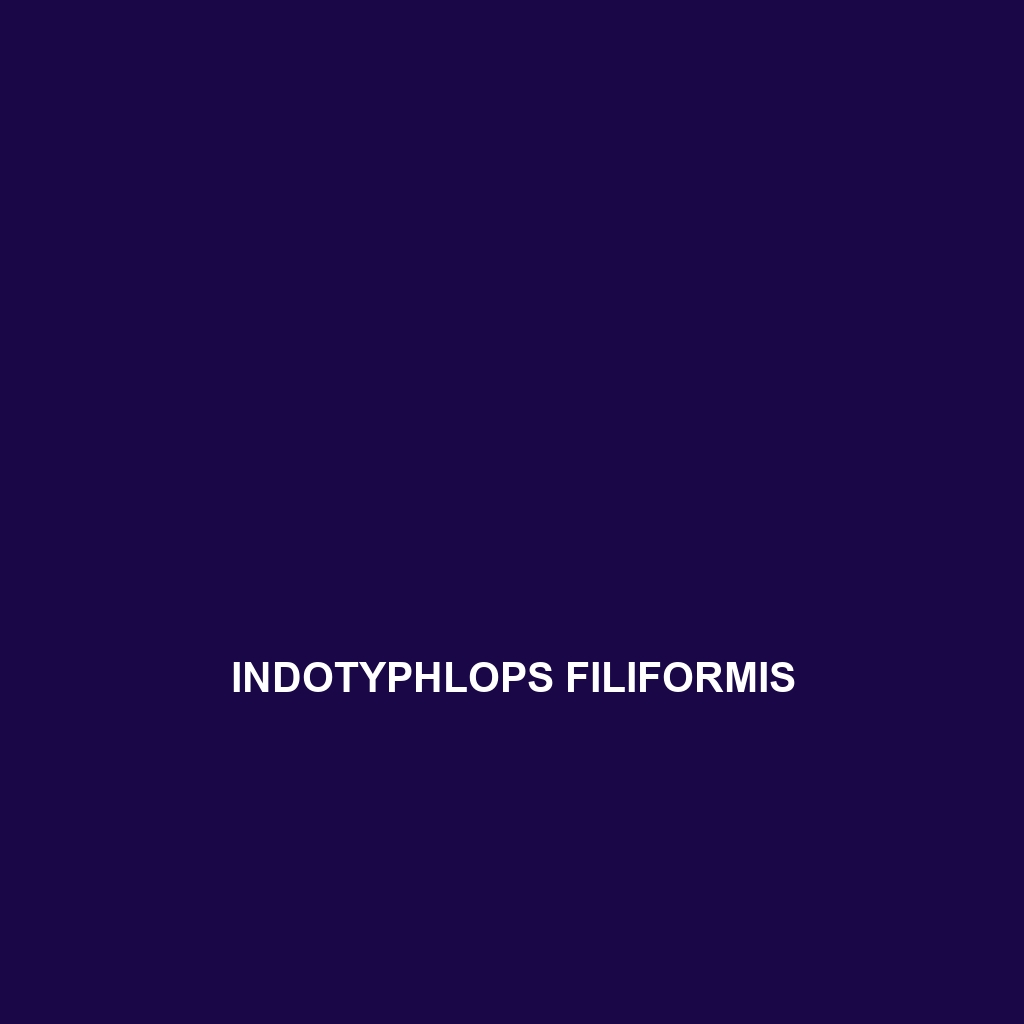Common Name
Indotyphlops filiformis
Scientific Name
Indotyphlops filiformis
Habitat
Indotyphlops filiformis, commonly known as the slender blind snake, primarily inhabits the lush environments of tropical and subtropical regions. This species is predominantly found in rainforests, where humidity levels are high, and vegetation is dense, providing ample cover. Its range extends into savannas and moist grasslands, typically in Southeastern Asia. These habitats showcase diverse ecosystems, featuring rich soil that supports a variety of plant life, which is crucial for the ecosystem dynamics. The snake prefers moist, loamy soil and is often associated with areas that experience regular rainfall, contributing to the high-fertility conditions these habitats offer.
Physical Characteristics
Indotyphlops filiformis exhibits distinctive physical features that set it apart from other snakes. Measuring approximately 30 to 60 cm in length, it possesses a slender body that allows it to navigate through the subterranean environment with agility. The color of this species typically ranges from a dull brown to grayish tones, providing effective camouflage among the forest floor’s leaf litter. Its scales are smooth, and it goes through a unique adaptation of having very small eyes, almost vestigial, rendering it almost blind. This adaptation is crucial for life underground, where sight is less important than olfactory and tactile senses.
Behavior
The behavior of Indotyphlops filiformis is fascinating, as it is primarily nocturnal, which means it is most active during the night. This activity pattern reduces the risk of predation and enables it to exploit its environment effectively. Social interactions are minimal, as this species is solitary, preferring to live alone. During mating season, males may exhibit competitive behaviors like scent marking to attract females. Their burrowing behavior is intrinsic, as they create tunnels through the soil to find food and evade predators, contributing to soil aeration in their habitats.
Diet
Indotyphlops filiformis is classified as an insectivore, primarily feeding on small invertebrates such as ants, termites, and other soft-bodied creatures found in the soil. Its diet plays a critical role in controlling the population of these insects, which may otherwise invade the ecosystem balance. The feeding patterns of this species include foraging underground and utilizing its keen sense of smell to detect prey. This diet is essential for its energy requirements and demonstrates the role of Indotyphlops filiformis as a predator in the soil ecosystem.
Reproduction
The reproductive cycle of Indotyphlops filiformis typically occurs during the warmer months, aligning with environmental conditions suitable for offspring survival. Mating rituals include the males engaging in courtship displays, with the female laying a clutch of eggs. The gestation period results in 5 to 10 eggs, depending on the female’s health and environmental resources. The young snakes hatch and are fairly independent from birth, showing parental care only in terms of ensuring a safe environment during egg-laying. This reproductive strategy enhances their survival in often competitive ecosystems.
Conservation Status
The conservation status of Indotyphlops filiformis is currently listed as least concern according to the IUCN Red List. However, ongoing habitat destruction and alteration of ecosystems remain significant threats to its population. Conservation efforts are primarily focused on habitat preservation and sustainable development practices in regions where these snakes are found. Public awareness campaigns and ecological studies also play a vital role in ensuring the survival of this species and its natural habitats.
Interesting Facts
One interesting fact about Indotyphlops filiformis is its ability to go for extended periods without food, thanks to its slow metabolism. This adaptive behavior is critical in nutrient-poor environments. Additionally, unlike many reptiles, this species is oviparous, meaning it lays eggs rather than giving birth to live young. Its almost blind condition not only poses an interesting adaptation to life underground but also opens inquiries into the evolutionary pathways of burrowing snakes.
Role in Ecosystem
Indotyphlops filiformis plays a critical role in its ecosystem, acting as a predator of insects, contributing to soil health through its burrowing activities and helping aerate the soil. Its presence indicates a balanced ecosystem, showcasing the interconnectedness of species. As a predator, it controls insect populations, which can help mitigate damage to vegetation and ensure that the biodiversity of its habitat remains intact. Overall, this species is a key part of the ecological community, reflecting the health and vibrancy of its environment.
